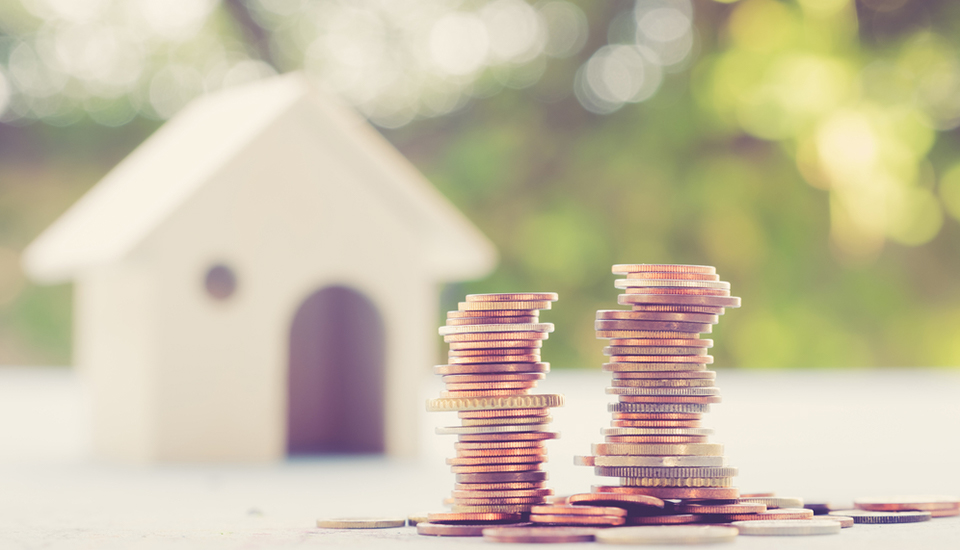June 19, 2018.
Do you wish you could pay off your home loan sooner? Many of us do. Most of us have big plans for vacations, retirement, or even a second home.
These days, the average American homeowner owes about $150,000 on their loan, according to a 2016 research report from the Urban Institute. It may be possible to save thousands on your home loan and get where you want to be, sooner. Whether you’re a homeowner or a homebuyer, these savings tips may apply.
7 mortgage-saving secrets of savvy loan officers
If any of these mortgage savings tips match your current circumstance, your loan officer can walk you through the next steps:
Get started
1. Prepay your home loan.

Cut seven years off of your 30-year loan with this bit of quick math:
- Divide your principal and interest payment by 12.
- Then, add that amount to your monthly payment.
- With this simple change, you can pay off your home loan in approximately 21 years.
Pretty incredible, right?
Here’s an example:
- For a 30-year loan term, the loan amount is $200,000 with a down payment of $50,000. The interest rate is 4.50 percent and the Annual Percentage Rate (APR) is 4.549 percent.
- Principal + Interest Payment = $1,013.37.
- $1,013.37 / 12 = $84.45.
- You’ll add $84.45 to your monthly payment. With this extra amount, you will be making 13 payments instead of 12 payments each year.
Now, you can pay as much as you like on your loan. The key is to decide how soon you would like your loan paid off. Then you can calculate the payment you’ll need to make to get it paid off in that time. You can also crunch the numbers using our free mortgage payoff calculator. Your options don’t end there: Some loan services offer other payment options — such as bi-monthly or weekly payments. Check with your lender to see if these options are available and if there are any costs involved.*
Is there a better way to mortgage? Instead of processing piles of paperwork, we prefer to fly.
Next
2. Take what you would pay to your principal and invest it instead.

If you’ve done the calculations, and you’ve found that you can make a higher rate of return on your money by investing it, then this could be the right option for you. Not sure if you’ve got it right? Your rate of return needs to be higher than the after-tax interest rate on your home loan for it to be worth it.
Here’s an example. If you were to take the $1,013 from option #1 and invest it monthly at 6 percent return, you would have:**
- $16,917 at the end of 10 years.
- $30,021 at the end of 15 years.
- $103,696 at the end of 30 years.
You can use these savings to pay off your home loan if you choose, but you can also do plenty of other things with it, like pay for your kid’s college fund or invest the amount further. Just remember to be consistent with your plan. Set up the monthly amount so it goes into your investment account automatically.
Next
3. Have your lender pay the closing costs.

You can raise your interest slightly to create a premium that covers your closing costs. This reduces your cost to close and helps you get into your home with less initial cost.
Here’s an example:
- Let’s say your interest rate is 5 percent with no points.
- If you create a premium, your rate with closing costs paid for you might be in the range of 5.50 percent.
- Your monthly payment will be higher, but you can get your home sooner.
- Make sure to consider the difference in what you will pay and if it is worth it for you in the long run.
How do you figure it out?
- Calculate the amount you would save per month at the lower rate.
- Then, take the closing costs (paid by your lender) and divide that by the monthly payment difference.
That number is how many months it would take you to recoup that cost.
More mortgage tips, more home decor ideas, and more really funny videos on your feed. Follow us on Instagram.
Next
4. Have the seller pay the closing costs.

Because the seller has a certain amount they want to net from the sale of their home, they will try to negotiate to get close to that amount.
This means they may be open to paying for your closing costs. If so:
- You may have a slightly higher purchase price, but you will be able to reduce your funds at closing.
- Talk to your lender about whether this could be worth it for you.
Next
5. Increase your down payment to pay less each month.

If you’re considering making a down payment of less than 20 percent on your home, you may want to consider how it can affect your long-term cost. With a down payment of less than 20 percent, you are required to pay for Private Mortgage Insurance (PMI). This is an added monthly cost on top of your mortgage payment.
Remember:
- If you pay more of a down payment upfront, you will save that extra amount each month.
- If you can’t afford a 20-percent down payment, there are programs that can help with that cost.
- Your lender will be able to tell you which programs you qualify for and how they can help you.
Next
6. Reduce your down payment and invest the money instead.

You could save money with a larger down payment, but you could also invest some of that amount elsewhere and end up gaining funds rather than just saving them. Consult your tax and/or financial advisors to find out if your rate of return will look better with investment before you make any big decisions.
Remember:
- The equity in your home does not earn a rate of return.
- The home itself can appreciate or depreciate in value.
For the many millennial homebuyers with student loan debt, consulting with a financial advisor can be critical to help determine if paying a larger down payment or investing is a better bet. As University of Illinois researchers found in 2016, college graduates with student loan debt are more likely to have lower net worth and fewer assets. Student loan debt may also be associated with owning a home with a lower value. To get the most out of your financial situation — and to help you save on your mortgage — guidance from an advisor and a loan officer can help.
Buying a house doesn’t have to be hard, and a loan officer should feel like a friend. Click here to get connected.
Next
7. Secure a VA home loan.

If you’re a veteran, you could qualify for a VA loan with no down payment:
- If you have a VA disability, your VA funding fee may be waived for you.
- Not only that, but there are plenty of other money-saving opportunities for veterans.
- Ask your lender what’s available and what you could qualify for.
There’s no need to pay more for your mortgage than you have to, and there’s no need to make mortgage more complicated than it has to be. For a homebuying or refinance experience that’s fast, friendly, and easy, click here to download LoanFly for free. Get prequalified in minutes, and get in touch with a loan officer who cares.***
* Financing and prepayment example listed is based on the loan officer’s experience and is not based on any specific or actual borrower qualification information.
** The rate of return listed is for example purposes only. There is no guarantee on any returns on your investments. The above scenarios are for general informational purposes only and do not predict or guarantee interest rates or rates of return. Please consult a qualified financial advisor for specific guidance. Cornerstone Home Lending is not a financial advisor.
***During normal business hours.
For educational purposes only. Please contact your qualified professional for specific guidance.
Sources are deemed reliable but not guaranteed.

